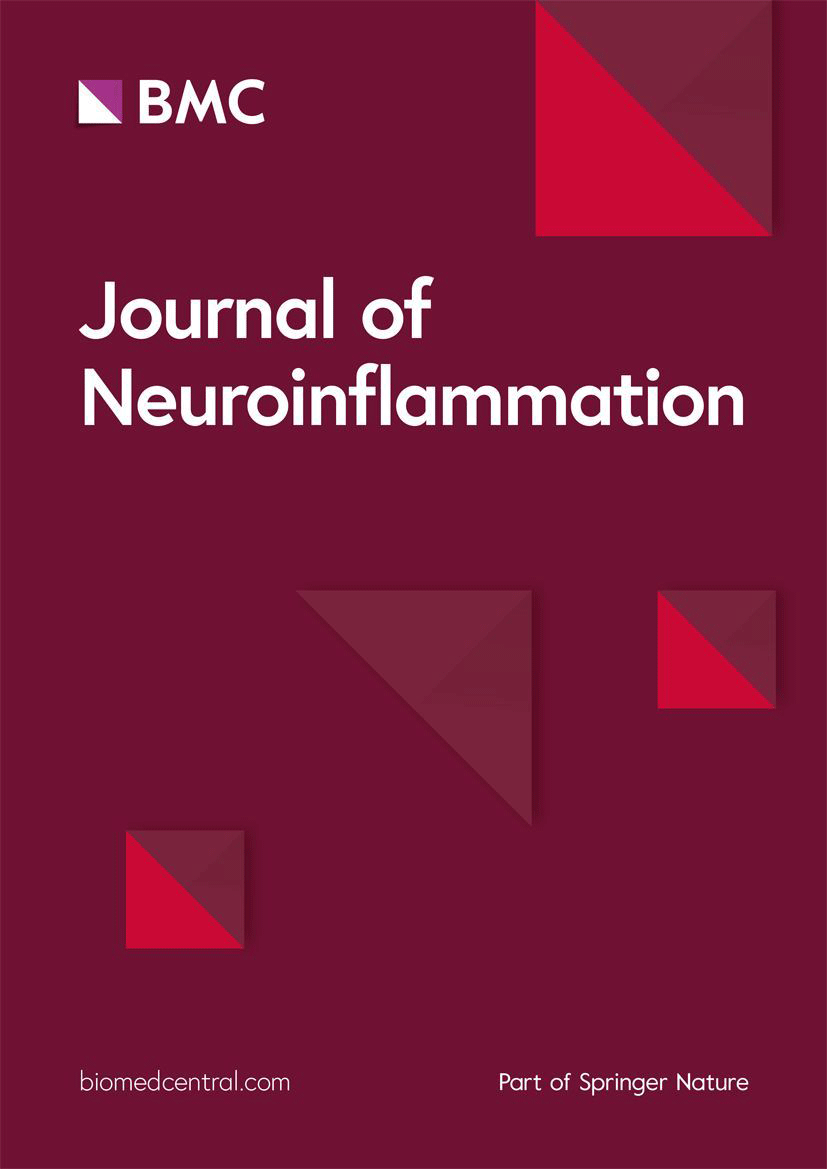颈动脉血管狭窄导致血液-脑脊液屏障损伤和神经炎症
IF 9.3
1区 医学
Q1 IMMUNOLOGY
引用次数: 0
摘要
脉络丛(Choroid plexus,ChP)通过脉络丛上皮细胞的紧密连接(TJ)形成血-脑脊液屏障,进而通过限制免疫细胞浸润中枢神经系统来防止神经炎症,从而帮助维持大脑的平衡。然而,慢性脑灌注不足是否会导致脉络丛上皮细胞结构损伤和血液-CSF屏障受损仍未得到充分研究。我们利用成年雄性 C57BL/6 J 小鼠的双侧颈动脉狭窄(BCAS)模型来诱导脑灌注不足,这是一种血管导致认知障碍和痴呆(VCID)的模型。评估了 BCAS 介导的血液-脑脊液屏障 TJ 蛋白、顶端分泌型 Na+-K+-Cl- 共转运体同工酶 1(NKCC1)蛋白和调节性丝氨酸-苏氨酸激酶 SPAK 的变化,以及髓源性免疫细胞的脑浸润。BCAS 引发了 TJ 蛋白(claudin 1、claudin 5)的动态变化,同时刺激了 ChP 上皮细胞中的 SPAK-NKCC1 复合物和 NF-κB。这些变化影响了血液-脑脊液屏障的完整性,巨噬细胞/小胶质细胞、中性粒细胞和 T 细胞对 ChP 的浸润就是证明。重要的是,在 BCAS 小鼠体内使用 SPAK 的强效抑制剂 ZT1a 对其进行药物阻断,可减轻脑免疫细胞浸润并改善认知神经功能。BCAS 会导致慢性 ChP 血液-CSF 损伤和免疫细胞浸润。我们的研究揭示了作为神经炎症治疗靶点的 SPAK-NKCC1 复合物。本文章由计算机程序翻译,如有差异,请以英文原文为准。
Carotid artery vascular stenosis causes the blood-CSF barrier damage and neuroinflammation
The choroid plexus (ChP) helps maintain the homeostasis of the brain by forming the blood-CSF barrier via tight junctions (TJ) at the choroid plexus epithelial cells, and subsequently preventing neuroinflammation by restricting immune cells infiltration into the central nervous system. However, whether chronic cerebral hypoperfusion causes ChP structural damage and blood-CSF barrier impairment remains understudied. The bilateral carotid stenosis (BCAS) model in adult male C57BL/6 J mice was used to induce cerebral hypoperfusion, a model for vascular contributions to cognitive impairment and dementia (VCID). BCAS-mediated changes of the blood-CSF barrier TJ proteins, apical secretory Na+-K+-Cl− cotransporter isoform 1 (NKCC1) protein and regulatory serine-threonine kinases SPAK, and brain infiltration of myeloid-derived immune cells were assessed. BCAS triggered dynamic changes of TJ proteins (claudin 1, claudin 5) accompanied with stimulation of SPAK-NKCC1 complex and NF-κB in the ChP epithelial cells. These changes impacted the integrity of the blood-CSF barrier, as evidenced by ChP infiltration of macrophages/microglia, neutrophils and T cells. Importantly, pharmacological blockade of SPAK with its potent inhibitor ZT1a in BCAS mice attenuated brain immune cell infiltration and improved cognitive neurological function. BCAS causes chronic ChP blood-CSF damage and immune cell infiltration. Our study sheds light on the SPAK-NKCC1 complex as a therapeutic target in neuroinflammation.
求助全文
通过发布文献求助,成功后即可免费获取论文全文。
去求助
来源期刊

Journal of Neuroinflammation
医学-神经科学
CiteScore
15.90
自引率
3.20%
发文量
276
审稿时长
1 months
期刊介绍:
The Journal of Neuroinflammation is a peer-reviewed, open access publication that emphasizes the interaction between the immune system, particularly the innate immune system, and the nervous system. It covers various aspects, including the involvement of CNS immune mediators like microglia and astrocytes, the cytokines and chemokines they produce, and the influence of peripheral neuro-immune interactions, T cells, monocytes, complement proteins, acute phase proteins, oxidative injury, and related molecular processes.
Neuroinflammation is a rapidly expanding field that has significantly enhanced our knowledge of chronic neurological diseases. It attracts researchers from diverse disciplines such as pathology, biochemistry, molecular biology, genetics, clinical medicine, and epidemiology. Substantial contributions to this field have been made through studies involving populations, patients, postmortem tissues, animal models, and in vitro systems.
The Journal of Neuroinflammation consolidates research that centers around common pathogenic processes. It serves as a platform for integrative reviews and commentaries in this field.
 求助内容:
求助内容: 应助结果提醒方式:
应助结果提醒方式:


